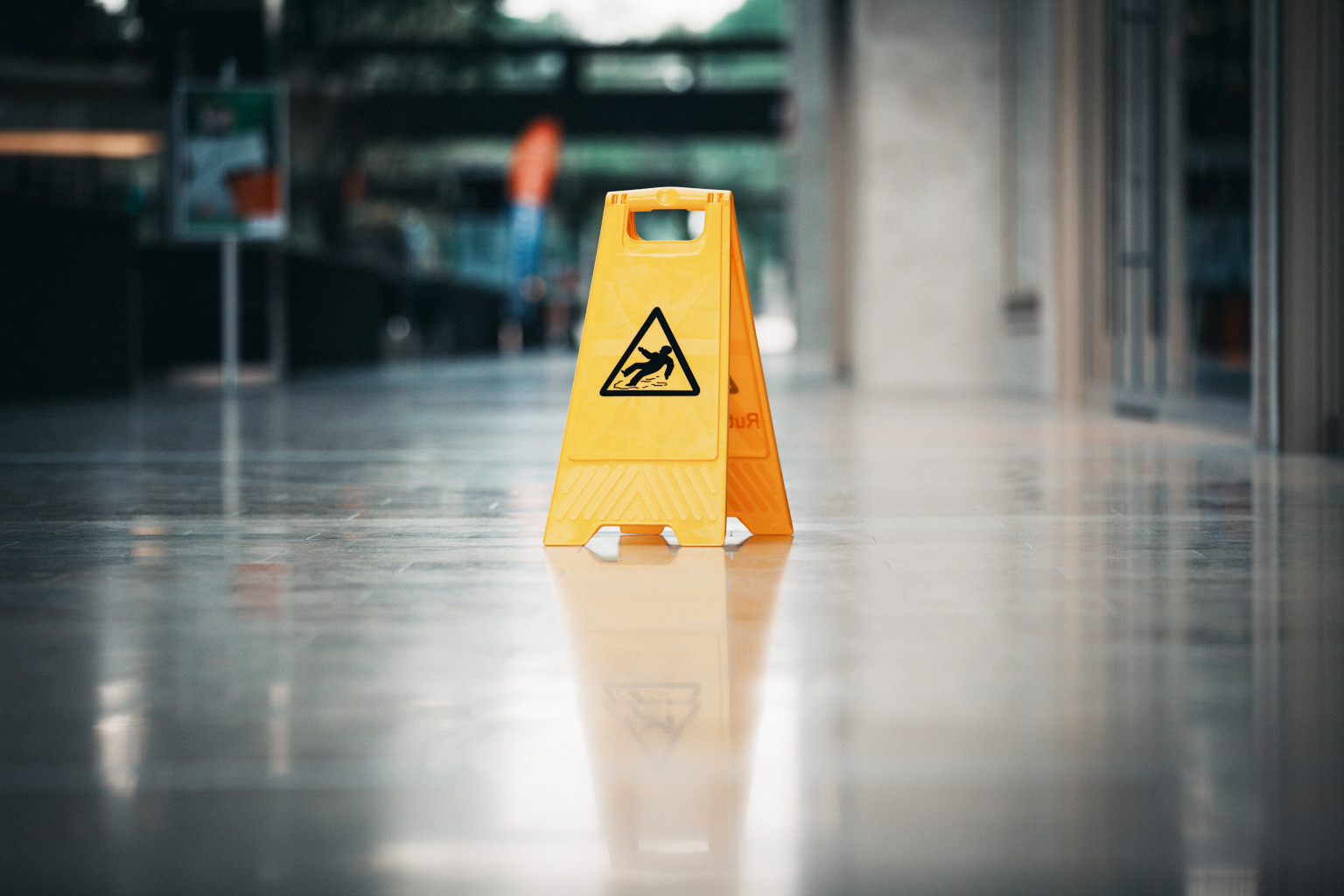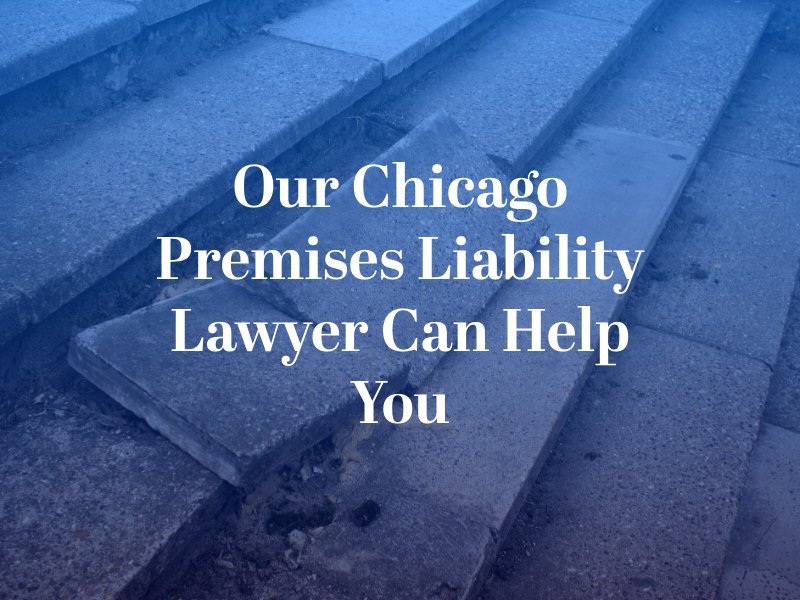Chicago Premises Liability Lawyer
Owners and managers of properties are responsible to a large degree for the safety of people who visit, live, or work on those premises. After an accidental injury occurring in a shopping mall, an office building, a manufacturing plant, a swimming pool, or any place that proves to be dangerous, contact an experienced Chicago premises liability attorney at Taxman, Pollock, Murray & Bekkerman, LLC.
We advocate zealously and effectively on behalf of people injured through the negligence of others. Contact us to schedule a free consultation via our contact form or by calling (312) 586-1700.
Why Choose Taxman, Pollock, Murray & Bekkerman, LLC?
- Proven Track Record: With over $500 million recovered in settlements and record-breaking jury verdicts, our law firm consistently delivers strong results for our clients. We are dedicated to fighting for the maximum compensation you deserve.
- Decades of Expertise: Our Chicago personal injury lawyers bring decades of experience to every case, including premises liability claims. We will use our extensive knowledge and skills to build a powerful case and protect your rights.
- Comprehensive Support: After an accident, managing a claim can be overwhelming. Our premises liability lawyers will take care of every detail of your case, so you can focus on your recovery while we handle the legal process.
How Our Chicago Premises Liability Attorney Can Help You with Your Claim
Premises liability lawsuits are usually quite complex, beyond the scope of what most individuals are used to dealing with period when you have a premises liability lawyer in Chicago by your side, you will have an advocate ready to thoroughly investigate your claim and handle communication with every other party involved.
Not only will your lawyer help with the investigation come up but they will also file your claim with the insurance carrier or file your case in civil court if a trial is necessary. Your lawyer will ensure you are if issued by trusted medical and financial experts who can assist with properly calculating your losses. Most importantly, your lawyer will keep you informed about your claim every step of the way while you focus on recovering from your injuries.
What Our Clients Have to Say
Other large firms in Chicago did not think my case could be won.”
View More Client Testimonials
Types of Premises Liability Claims in Illinois
Premises liability claims arise in a wide variety of ways in and around the Chicago area. Any time the careless, negligent, or intentional actions of a property owner lead to injuries to those who have a right to be on their premises, an injury claim against the property owner will likely occur.
Some of the most common premises liability claims we assist clients with in this area include:
- Slip and fall incidents
- Accidents involving elevators or escalators
- Stairwell or balcony collapse
- Objects falling from shelves or higher locations
- Injuries caused by fires or electrocutions
- Incidents caused by negligent security
- Swimming pool or hot tub accidents
- Exposure to hazardous chemicals
- Dog bites
Premises liability incidents can arise in a variety of locations throughout Chicago. These incidents can occur in an array of commercial establishments, such as retail stores, office buildings, movie theaters, restaurants, grocery stores, banks, bars, amusement parks, public parks and spaces, hotels and resorts, and more. Premises liability incidents can also arise at private residences and on government property.
If you have any questions about who may be held liable for your particular premises liability incident, we encourage you to reach out to your Chicago premises liability attorney immediately. In some situations, there may be more than one party to blame for the incident, in which case, the claim will become more complex.
How Much Money Can I Expect to Receive If I File a Premises Liability Claim?
There is no set amount of compensation paid to individuals if their premises liability claim against a property owner is successful. There are various factors that can affect an overall settlement or jury verdict amount.
Some of these factors include the following:
- Severity of the injury or injuries
- Length of time it takes a victim to recover
- Amount of lost wages a person experiences due to the injury
- Total verifiable pain and suffering a person experiences
- Overall insurance policy limitations
- Whether or not there was any shared fault for the incident
If you have any questions about how much compensation to expect if your premises liability claim in Chicago is successful, we encourage you to talk to your attorney. A Chicago premises liability lawyer may be able to give you a ballpark answer based on the facts of your case and their personal experience handling similar situations. However, premises liability claims can be unpredictable, particularly if they go to a courtroom.

Case Results We’ve Secured For Our Clients
-
$2.1 Million
- A settlement for the family of a young woman killed in the E2 Nightclub tragedy. This amount obtained represents the highest settlement of any of the 71 victims that filed suit.
-
$1.5 Million
- Awarded for a slip and fall on a liquid substance at a restaurant resulting in a broken leg with surgery.
-
$1.375 Million
- A record settlement for a 96-year-old man that slipped and fell on a recently mopped floor and broke his hip ultimately causing his death.
-
$1 Million
- A settlement for a woman that tripped over an exposed bolt in the floor of a Chicagoland retail store; a record medical malpractice recovery.
View More Case Results Here
Potential Damages Available for a Premises Liability Claim
Any person who sustains an injury caused by the careless or negligent actions of a property owner in the Chicago area should be able to recover compensation for their losses. This is true regardless of what type of property (private residence, business, government, etc.). Our Chicago premises liability attorneys work diligently to recover both economic and non-economic damages on behalf of our clients.
Economic Damages
The economic losses a person sustains as a result of a premise liability claim are also referred to as calculable expenses. This means that we usually do not have a problem calculating the following types of losses because we can gather bills and receipts associated with the expenses:
- Emergency medical expenses caused by the injury
- All follow-up hospital and medical expenses
- Rehabilitation or physical therapy expenses
- Surgical costs
- Prescription medication costs
- Last wages
- Out-of-pocket losses
- Property damage expenses
Non-Economic Damages
These types of losses are harder to quantify because there may not be bills or receipts that can be added up to adequately calculate a person’s:
- Physical pain and suffering damages
- Emotional or psychological trauma
- Loss of quality of life
- Both economic and non-economic damages are crucial in these situations. An individual needs to receive compensation to make them “whole” after they sustain an injury caused by the negligence of a property owner.
Establishing Negligence in a Premises Liability Case
In order to ensure the success of a premises liability claim, it will be crucial to establish the four elements of negligence. These four elements must be present in all types of personal injury claims taken to court:
1. Duty
It must first be established that the property owner owed a duty of care to the injury victim. In general, under the Illinois Premises Liability Act (740 ILCS 130/), all property owners who allow individuals onto their property owe a duty of care to others. This means that they must regularly inspect and maintain their premises for any hazards and take steps to remedy any dangerous situation. If a person had a right to be on the property where the injury occurred, then it is likely that the property owner owed a duty of care to them.
2. Breach
It must then be established that the property owner somehow breached their duty of care. There are various ways that property owners can breach their duty of care to those who have a right to be there. For example, something as simple as failing to put up a “wet floor” sign after mopping or waxing could be a breach of duty. Failing to adequately maintain elevators, stairs, or escalators, or any other part of the building is also a breach of duty of care.
3. Causation
After establishing that a breach of duty occurred, it must be shown that the breach directly caused the plaintiff’s injuries. For example, if a person sustained an injury as a result of their own horseplaying as opposed to the breach of duty on the part of the property owner, there may not be enough to show causation, even if the property owner allowed a hazardous condition to arise on the property. However, if a person slips on a spilled jar of vinegar that the store employees knew about but failed to clean up, this may be enough to show causation.
4. Damages
Finally, it must be shown that the plaintiff sustained some sort of monetary loss as a result of the breach of duty and their injuries. This can include medical bills, lost income, property damage expenses, pain and suffering damages, and more.
Duties Owed by Landlords
Exactly what kind of duty does a landlord owe tenants in Chicago and other areas throughout Illinois? Many jurisdictions throughout the state have specific rules related to the rights of tenants and the duties of landlords, but there are general overall duties that every landlord owes, regardless of location:
- Maintain the premises
- Safeguard and return the security deposit made by the tenant
- Not engaging in any illegal housing discrimination
- Stay out of the premises except in certain circumstances outlined in the lease agreement and applicable by law
Chicago Landlord Tenant Ordinance
Additionally, there are parameters set forth by the Chicago Resident Landlord Tenant Ordinance (RLTO) that outline additional responsibilities with more specificity. These responsibilities include the requirements to:
- Preserve the structural integrity of the building and additional structures to prevent any damage.
- Ensure that floors, walls, stairwells, porches, windows, elevators, and ceilings are consistently maintained in good condition.
- Upkeep of bathtubs, showers, and sinks to guarantee proper functionality.
- Provide tenants with access to both hot and cold running water.
- Supply heating during the winter months to maintain a comfortable living environment.
- Take necessary steps for pest control to prevent infestations by rodents and vermin.
- Provide secure locks and deadbolts to ensure tenant safety and security.
- Regular maintenance and repair of all appliances and equipment provided under the lease agreement.
- Maintain the property to be waterproof and free of any leaks.
- Keep both individual dwelling units and common areas of the building in a suitable and habitable condition, prioritizing the well-being and comfort of tenants.
Landlords are not allowed to enter a rented space whenever they feel the need. At a minimum, landlords are required to give a two-day notice before entering to make repairs, conduct government inspections, show the unit off to prospective buyers or renters, etc. Landlords are also responsible for providing various types of information and disclosures.
Landlords in Chicago are not allowed to ask tenants to sign a lease renewal more than 90 days before the current agreement terminates. The purpose of this law is to help protect tenants who want to evaluate other options before deciding to renew.
Will Your Premises Liability Case Go to Court?
The vast majority of premises liability cases in Chicago get settled with insurance carriers, but that is not always the case. If the case is resolved through an insurance settlement, you will not have to go to court. However, in the event the insurance carrier refuses to offer a fair settlement, your lawyer may file a personal injury claim directly against the at fault party. This starts the lengthy discovery process, but you will only have to go to court if an agreement cannot be reached before a jury trial is scheduled.
Contact Our Chicago Premises Liability Lawyer Today
Call or e-mail us to schedule a preliminary case review after a serious accident on dangerous premises.
If you have suffered serious injury as the result of a hazardous condition or situation on property, the Chicago, IL attorneys at Taxman, Pollock, Murray & Bekkerman, LLC, can help you make informed decisions about your legal rights. As our client, we are proud of the fact that a team of legal professionals and investigators who are dedicated to your cause will back you. Please call us today at (312) 586-1700 or contact us via our online form for a free, no-obligation consultation.
Our Chicago Office
225 W Wacker Dr
Suite 1650
Chicago, IL 60606



